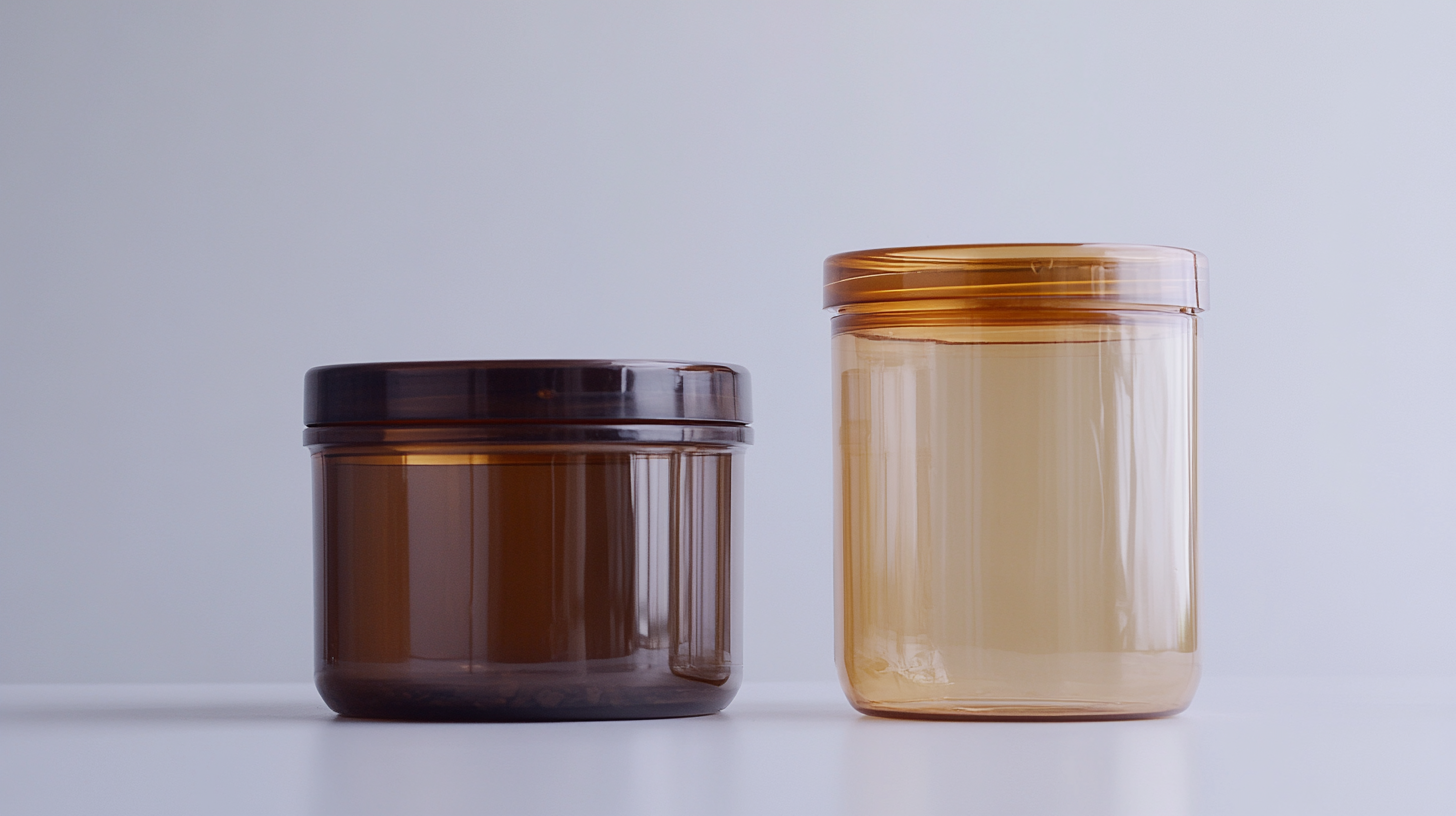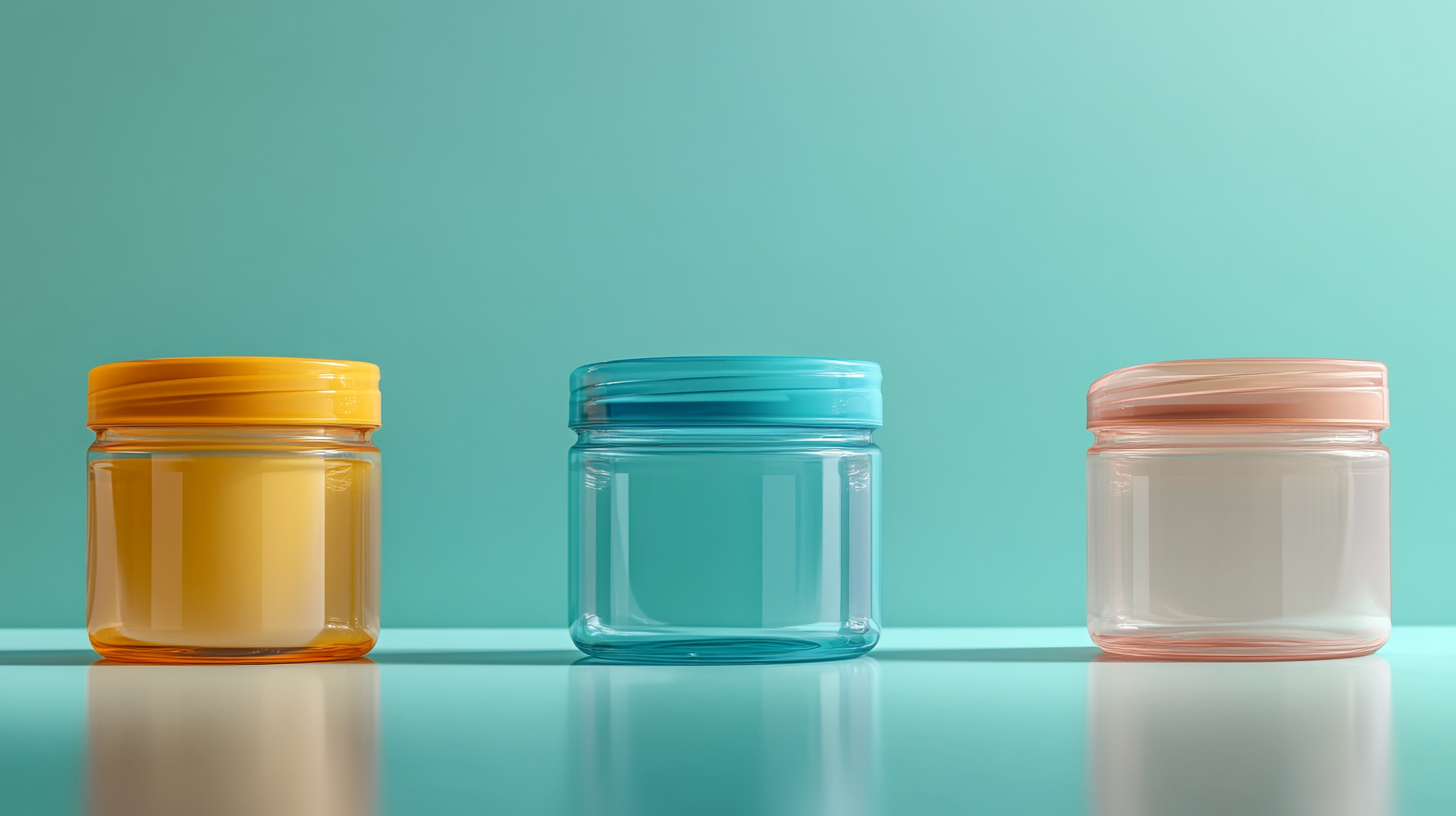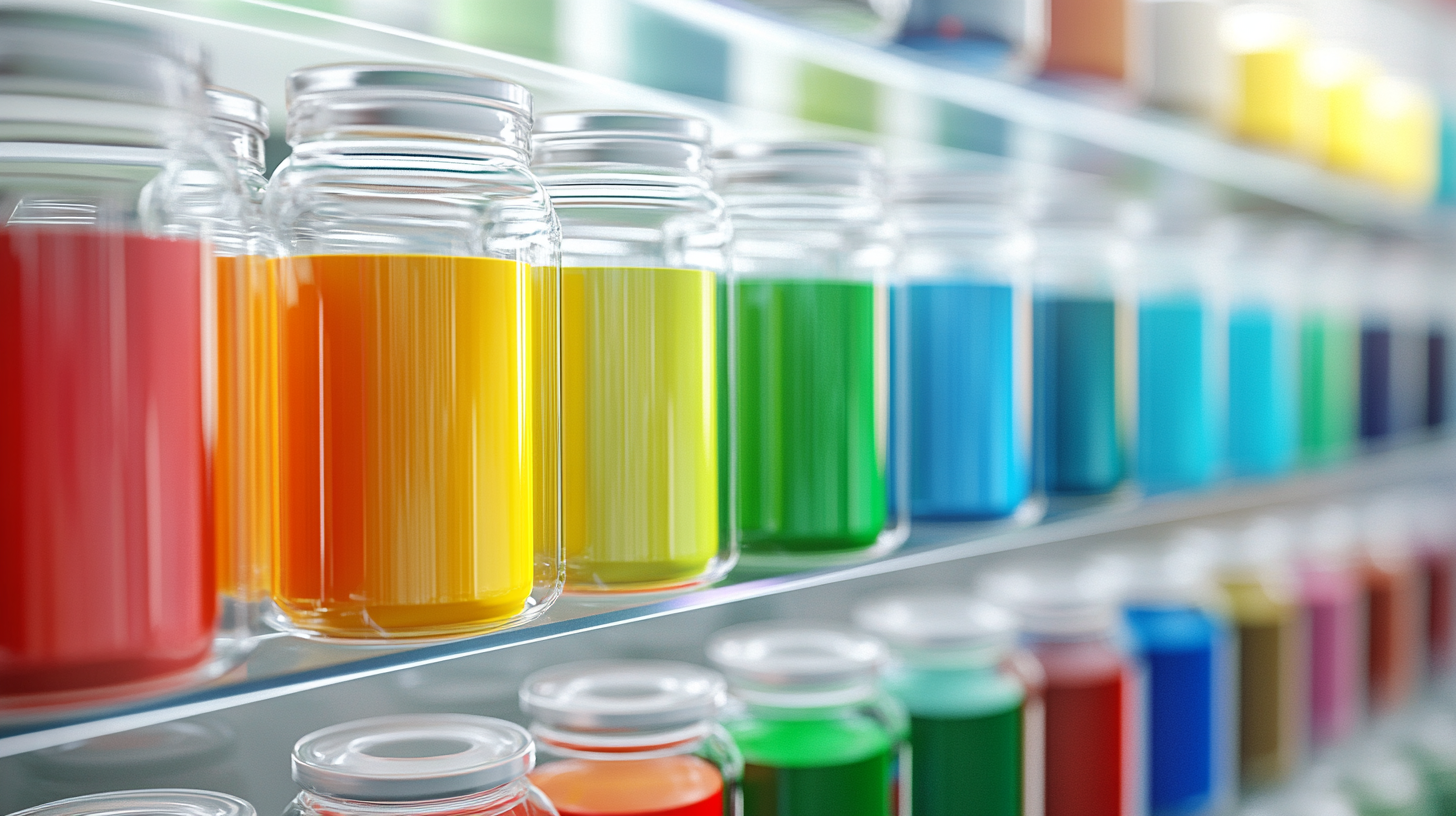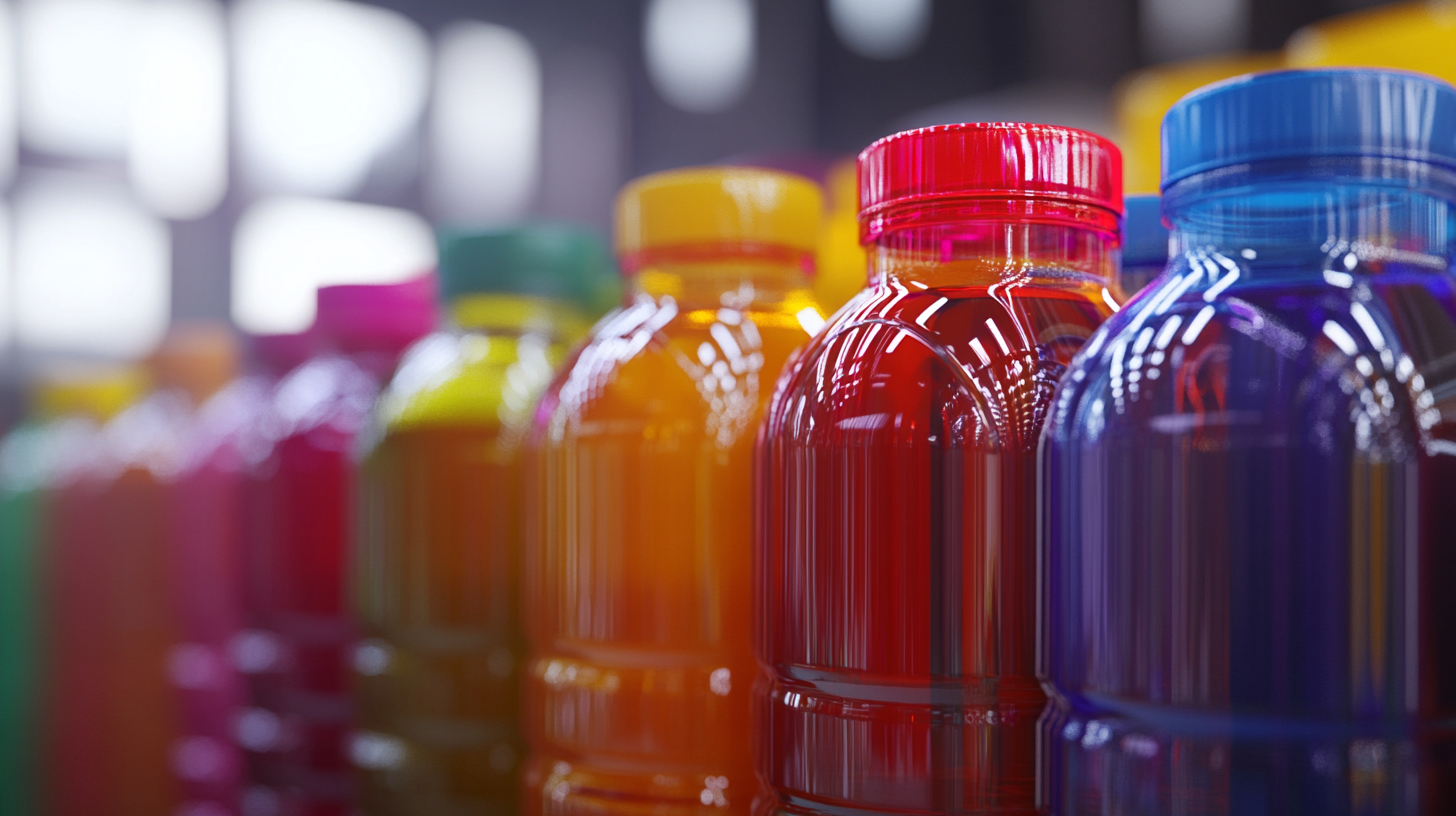The growing demand for sustainable and versatile packaging solutions has positioned Pet Plastic Jars as a leading choice in the global market. According to a recent report by Smithers Pira, the global market for plastic packaging is expected to reach $500 billion by 2026, with PET materials accounting for a significant portion due to their lightweight nature and excellent recyclability. Pet Plastic Jars, specifically, have gained popularity in various industries, including food and beverage, cosmetics, and pharmaceuticals, attributable to their ability to preserve product integrity while being environmentally friendly.
Moreover, the versatility of Pet Plastic Jars is underscored by their adaptability to various designs and functionalities, catering to diverse consumer needs. A survey conducted by Freedonia Group indicates that the demand for plastic jars is projected to grow at an annual rate of 3.5% through 2024. This rise can be attributed to various factors, including their cost-effectiveness, durability, and the increasing emphasis on eco-friendly packaging options. As we delve deeper into the myriad applications and benefits of Pet Plastic Jars, it becomes clear that they are not just a packaging solution but a progressive step towards sustainable practices in multiple sectors.

The packaging industry has witnessed significant transformation with the evolution of PET plastic jars, now a staple in global packaging solutions. Initially popular for their lightweight and shatter-resistant properties, PET jars have expanded their role beyond traditional uses. They are now a preferred choice in various sectors, from food storage to cosmetics, highlighting their versatility and adaptability. As sustainability becomes an increasingly pressing concern, the demand for recycled PET has surged, driven by stringent environmental regulations and consumer preference for eco-friendly products. Companies are recognizing the importance of integrating recycled materials into their packaging solutions, aligning with global efforts to enhance recyclability. For instance, while certain major brands are making strides toward increased use of recycled PET, others have encountered challenges, underscoring the complexities of achieving sustainability targets in the fast-evolving market. Looking ahead, the global plastic packaging market is projected to continue growing, with the PET containers market expected to reach significant figures in the coming years. This growth can be attributed to a growing awareness of sustainable packaging solutions and innovations in material science that allow for more effective recycling processes. As consumer preferences shift toward durable and lightweight packaging, PET plastic jars will undoubtedly play a critical role in shaping the future of sustainable packaging solutions.

Pet plastic jars have emerged as a versatile choice in global packaging solutions, reflecting a growing trend driven by sustainability and functionality. The use of polyethylene terephthalate (PET) in packaging not only meets diverse consumer needs but also addresses pressing environmental concerns. With increasing awareness of plastic waste, PET has become a preferred material for manufacturers, particularly in the beverage industry. The incorporation of post-consumer resin (PCR) into these jars significantly reduces landfill contributions, cutting emissions and promoting the use of recycled materials.
One of the key benefits of pet plastic jars is their adaptability to various product types, ranging from food and beverages to personal care items. These jars offer superior clarity and strength, making them ideal for showcasing product quality while providing secure packaging. Furthermore, advancements in PET recycling technologies are paving the way for higher sustainability in packaging. Efforts to recycle PET waste and develop efficient sorting methods are crucial in enhancing the circular economy, ultimately leading to less plastic in our environment.
The reliability of PET packaging is also underscored by innovative developments such as lightweighting techniques that maintain product integrity without compromising on quality. As companies prioritize sustainable practices, the versatility of pet plastic jars positions them as a prime solution for businesses aiming to balance functionality with environmental responsibility.

The increasing emphasis on environmental responsibility has brought sustainability to the forefront of packaging solutions, particularly with the rising popularity of PET (polyethylene terephthalate) plastic jars. Globally, the PET market is projected to reach approximately $96 billion by 2027, according to a report by Fortune Business Insights. This growth is largely influenced by consumer demand for sustainable and recyclable materials in various industries, including food, personal care, and pharmaceuticals.
PET jars stand out due to their lightweight nature, which significantly reduces transportation emissions. A report from the International Journal of Environmental Research and Public Health highlights that switching from glass to PET for food and beverage packaging can save up to 50% in energy consumption during transport. Additionally, PET is 100% recyclable, and recycled PET (rPET) can be used to produce new packaging, reducing the reliance on virgin materials and minimizing landfill waste. In 2020, the recycling rate for PET bottles reached about 29.1%, as reported by the National Association for PET Container Resources, showcasing a growing trend towards circular economy practices.
Moreover, many brands are now adopting closed-loop systems, further enhancing the sustainability of PET packaging. Companies such as Coca-Cola have committed to using at least 50% recycled content in their PET products by 2030. This shift not only improves brand image among eco-conscious consumers but also supports broader environmental goals such as reducing carbon footprints and supporting resource conservation efforts. As the global packaging industry continues to evolve, PET plastic jars offer a versatile and sustainable alternative that meets both consumer demands and sustainability goals.

Pet plastic jars have revolutionized the packaging industry through innovative designs and advanced manufacturing technologies. Their lightweight yet durable nature makes them ideal for a wide range of applications, from food storage to cosmetics. Manufacturers are now utilizing cutting-edge techniques such as injection molding and blow molding, which not only enhance the production efficiency but also allow for intricate designs that appeal to consumers. These methods enable the creation of jars in various shapes and sizes, catering to diverse market demands.
Furthermore, modern PET plastic jars are increasingly being designed with user convenience in mind. Features such as easy-to-open lids, built-in measuring tools, and tamper-evident seals ensure that products inside remain safe and accessible. Additionally, advancements in labeling technologies provide opportunities for vibrant, high-quality graphics that capture consumer attention, enhancing brand visibility. With sustainability in mind, many manufacturers are also exploring the use of recycled PET materials, which not only reduce environmental impact but also promote a circular economy within the packaging industry.
The versatility of PET plastic jars extends beyond their physical attributes. As brands seek to differentiate themselves in a highly competitive marketplace, the emphasis on customization has grown. Collaborative efforts between brands and packaging designers have led to the creation of unique jar designs that reflect brand identity and values. These innovations not only improve aesthetic appeal but also enhance functionality, making PET jars a preferred choice for global packaging solutions.
The demand for PET plastic jars in global packaging solutions is experiencing a significant surge, driven by evolving market trends and consumer preferences. The PCR (Post-Consumer Recycled) plastic packaging market, valued at USD 19.35 billion in 2024, is projected to exceed USD 47.48 billion by 2033. This notable growth highlights the increasing emphasis on sustainable packaging solutions, with consumers and industries alike seeking products that support environmental responsibility.
One of the key factors influencing the demand for PET plastic jars is the rising reliance on recycled materials. As the market for recycled plastics expands, the PET sector is rapidly adapting to incorporate more recycled content into its products, particularly in industries such as beauty and healthcare. The forecasted growth of the recycled PET market to USD 17.2 billion by 2032 underscores the urgency for companies to innovate and invest in sustainable packaging alternatives, making PET jars an attractive option due to their recyclability and durability.
Furthermore, the general shift towards eco-friendly packaging solutions across various sectors, including beverages and pharmaceuticals, positions PET jars as a versatile choice in the packaging landscape. With the global plastic packaging market projected to grow from $431.28 billion in 2023 to $733.60 billion by 2032, manufacturers are increasingly adopting PET jars to meet the expanding demand for sustainable and efficient packaging solutions. The future of PET plastic jars looks promising, influenced by technological advancements and an ongoing commitment to environmental sustainability.
